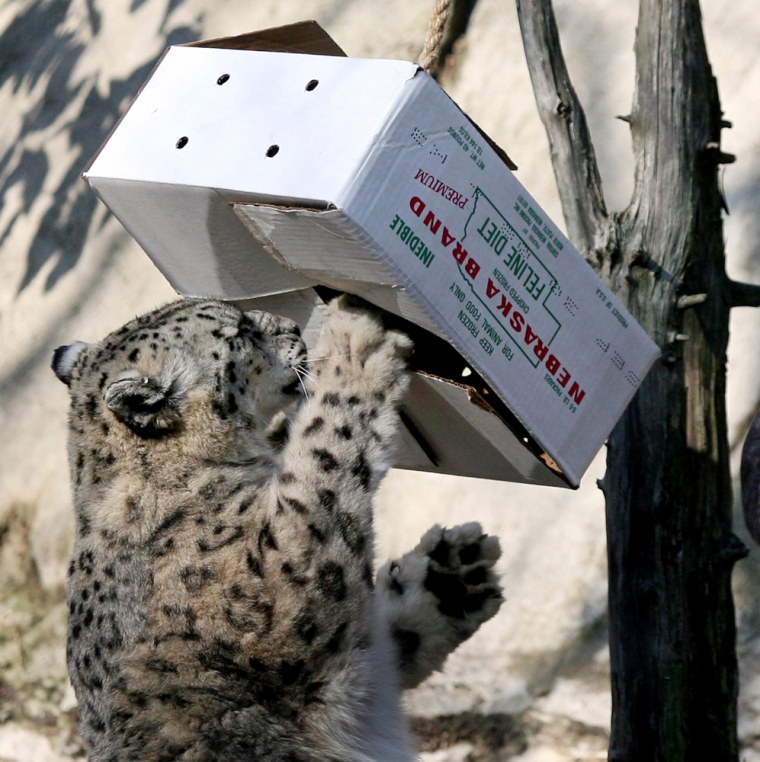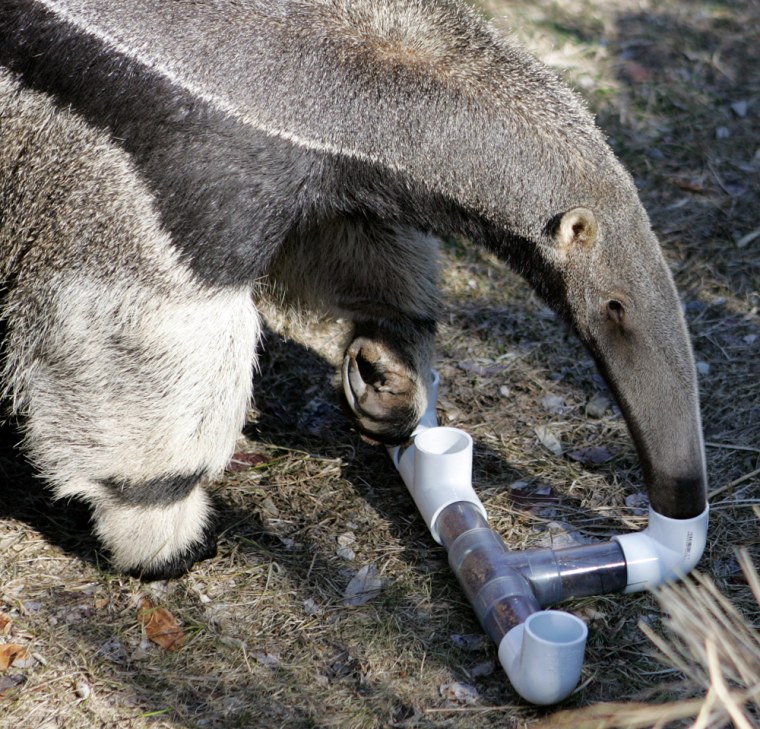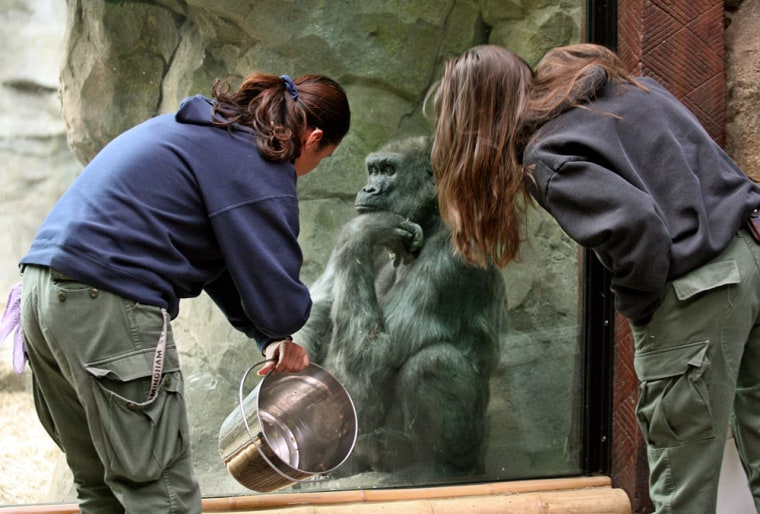A lion rips open a paper bag stuffed with hay and meat. Giraffes chew up old Christmas trees. Asian black bears claw on empty beer kegs.
It's been a busy winter for zoo animals — and their schedules promise to be just as packed this spring. But this is not for show: Zoo keepers say games and other activities are essential to keeping animals physically and mentally healthy when they are out of their natural environments.
The so-called "animal enrichment" programs are part of a general change in zoo philosophy in the past several years.
Not long ago, zoos thought keeping animals alive and healthy meant serving food in bowls and giving them limited physical activities out of fear of injury. During the cold weather, animals were kept off exhibit in warm buildings with little to do.
"But in an effort to keep them healthy, we almost made them unhealthy," says Tim French, deputy director for animal programming at the Roger Williams Park Zoo in Providence, R.I. "Zoo animals tended to be overweight, pretty much across the board. Behavioral issues were a much bigger problem because they were idle both physically and mentally."

Now all the zoos in the U.S. have enrichment programs of some kind, some even mandated by the federal government.
The programs often are designed around temperatures and the elements. At zoos in New England, for example, zebras run around snowmen in cold weather, tigers jump through old tires next to heated rocks and monkeys tear up streamers for fun and for stimulation inside temperature-controlled exhibits.
"In the old days, some people viewed what we now call animal enrichment as an unnecessary pain," said John Linehan, president and CEO of Zoo New England, which oversees Boston's Franklin Park Zoo and nearby Stone Zoo. "But now we know a lot more since we've become more sensitive to animals' needs."
During a recent cold morning at Boston's Franklin Park Zoo, for example, zookeepers fed their pack of western lowland gorillas by tossing food from the ceiling of the gorillas' enclosed indoor space. The food fell throughout the tropical forest exhibit, forcing Gigi and the other gorillas to search for the food as they would in the wild.
Around the corner, zookeepers gave Priscilla the warthog a box packed with sweet potatoes and carrots. Priscilla spent a few minutes tearing up the box to get to the goodies. "It's like opening a Christmas gift," said Jeannine Jackle, assistant curator of the tropical forest exhibit. "It makes it fun."

At the Roger Williams Park Zoo, handlers keep George and Grace, a pair of Asian black bears, busy by placing an empty beer keg in their exhibit. The keg's beer smell gets the bears going, as does the deer scent keepers place on the keg. The bears claw and lick the keg for exercise, and heat can be seen from their breaths.
"They love it," said Al D'Ercole, a Roger Williams Park keeper.
But animal enrichment does not simply consist of fun and games. Sometimes, it means distracting them with a toy to administer medical care instead of sedating them.
That's how zoo officials at the Franklin Park Zoo handle their 15-year-old "King of the Jungle," Christopher. Charlotte Speakman, a senior keeper, said officials will place a log scented with perfume close enough to the door of the lion's den so that his dangling tail will stick out. Keepers can then inject the lion's tail with medicine or any needed vaccines. After receiving the vaccines, the lion could either stay in his warm indoor room or venture safely outside to rest on his heated rock.
Since the field of animal enrichment is so new, zoo officials are still learning and occasionally make mistakes, Linehan said. For example, a few years ago, keepers placed a set of jeans in an exhibit with a snow leopard. The animal loved playing with the jeans so much that it ate them. In the end, the snow leopard was fine save for a few short-term digestive problems.
"It is supposed to be fun," Linehan said. "Not a stomachache."
